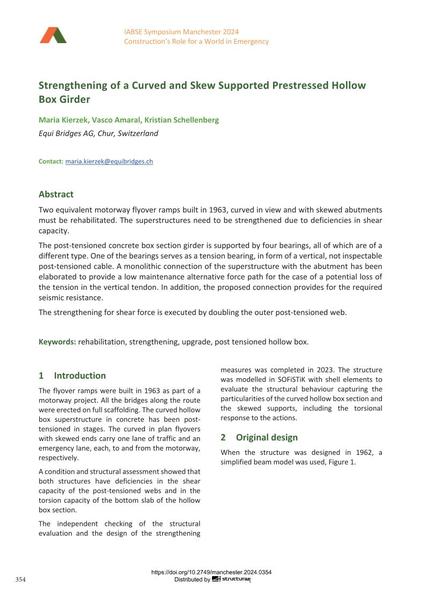Strengthening of a Curved and Skew Supported Prestressed Hollow Box Girder

|
|
|||||||||||
Détails bibliographiques
| Auteur(s): |
Maria Kierzek
(Equi Bridges AG, Chur, Switzerland)
Vasco Amaral (Equi Bridges AG, Chur, Switzerland) Kristian Schellenberg (Equi Bridges AG, Chur, Switzerland) |
||||
|---|---|---|---|---|---|
| Médium: | papier de conférence | ||||
| Langue(s): | anglais | ||||
| Conférence: | IABSE Symposium: Construction’s Role for a World in Emergency, Manchester, United Kingdom, 10-14 April 2024 | ||||
| Publié dans: | IABSE Symposium Manchester 2024 | ||||
|
|||||
| Page(s): | 354-360 | ||||
| Nombre total de pages (du PDF): | 7 | ||||
| DOI: | 10.2749/manchester.2024.0354 | ||||
| Abstrait: |
Two equivalent motorway flyover ramps built in 1963, curved in view and with skewed abutments must be rehabilitated. The superstructures need to be strengthened due to deficiencies in shear capacity. The post-tensioned concrete box section girder is supported by four bearings, all of which are of a different type. One of the bearings serves as a tension bearing, in form of a vertical, not inspectable post-tensioned cable. A monolithic connection of the superstructure with the abutment has been elaborated to provide a low maintenance alternative force path for the case of a potential loss of the tension in the vertical tendon. In addition, the proposed connection provides for the required seismic resistance. The strengthening for shear force is executed by doubling the outer post-tensioned web. |
||||
| Mots-clé: |
renforcement
|
||||
